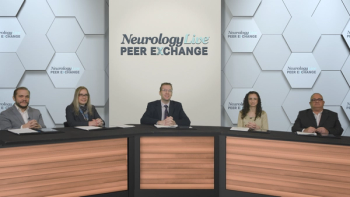
Refractory Tourette Syndrome
There’s an exciting new treatment for refractory Tourette syndrome, but many aspects to consider before recommending this option.
Gilles de la Tourette syndrome is both one of the most neurologically complex and the most neurologically simple disorders. Characterized by repetitive involuntary tic movements, it is also one of the most socially limiting conditions for afflicted patients who must live with a visible and often embarrassing neurological movement disorder that is neither a handicap nor a behavioral abnormality.
One of the exciting new treatments for refractory Tourette's syndrome is deep brain stimulation to the anteromedial globus pallidus.
What is deep brain stimulation?
While patient samples are limited, one of the larger clinical trials involved 48 patients in Milan, Italy. Patients were surgically treated with devices placed in the anteromedial globus pallidus interna bilaterally. Stimulation was set at a frequency of 150 Hz with an approximate voltage of 1.0V. Voltage was adjusted to better control symptoms during follow up visits as the study continued.
After the procedure, most patients reported a decline in tic frequency and severity. Objective postoperative assessment measures, including the Yale Global Tic Severity Rating Scale, the Yale-Brown Obsessive Compulsive Scale, the Beck Depression Inventory, the State Trait Anxiety Inventory, and the Subjective Social Impairment on a 10-point Visual Analogue Scale, confirmed significant improvement of patient symptoms.
Important aspects to consider with deep brain stimulation treatment
There are a number of important factors to consider when deciding whether to refer a patient for an implantable device for control of refractory Tourette syndrome.
Side effects – Because implantable stimulators are relatively new, long-term side effects are not clearly understood. Few study patients have experienced infection, which would most likely occur shortly after the procedure, if at all. Long-term side effects are yet to be seen.
Therapeutic duration – Short-term responsiveness of symptoms has been well documented. However, it is hard to determine whether or not the effectiveness endures over time.
Cost – The one-time cost of surgery may be substantial and the long-term expense of continued therapeutic monitoring may be prohibitive for patients if employment or insurance circumstances change over the years following the procedure.
Patient noncompliance – The implanted stimulator does require some degree of maintenance and follow-up care. While experimental studies are well controlled and include regular patient observation, potential consequences of noncompliance with follow up care are still undetermined.
Disability – If patients become disabled years after the procedure, for any unrelated medical condition, whether or not their care givers will be able to continue adequate maintenance might affect the action of the stimulator.
Malfunction – It is important to consider how electrical malfunctions will be handled for healthy patients and for unhealthy patients.
Overall, the paucity of effective treatments available for Gilles de la Tourette syndrome has made the condition particularly challenging for patients to endure. Emerging developments in a surgical treatment approach may be a long-awaited option for patients, their families, and their health care providers.
Have you treated patients who have Gilles de la Tourette syndrome? Would you consider a surgical treatment option?
Reference: Servello D, et al.
Newsletter
Keep your finger on the pulse of neurology—subscribe to NeurologyLive for expert interviews, new data, and breakthrough treatment updates.
















